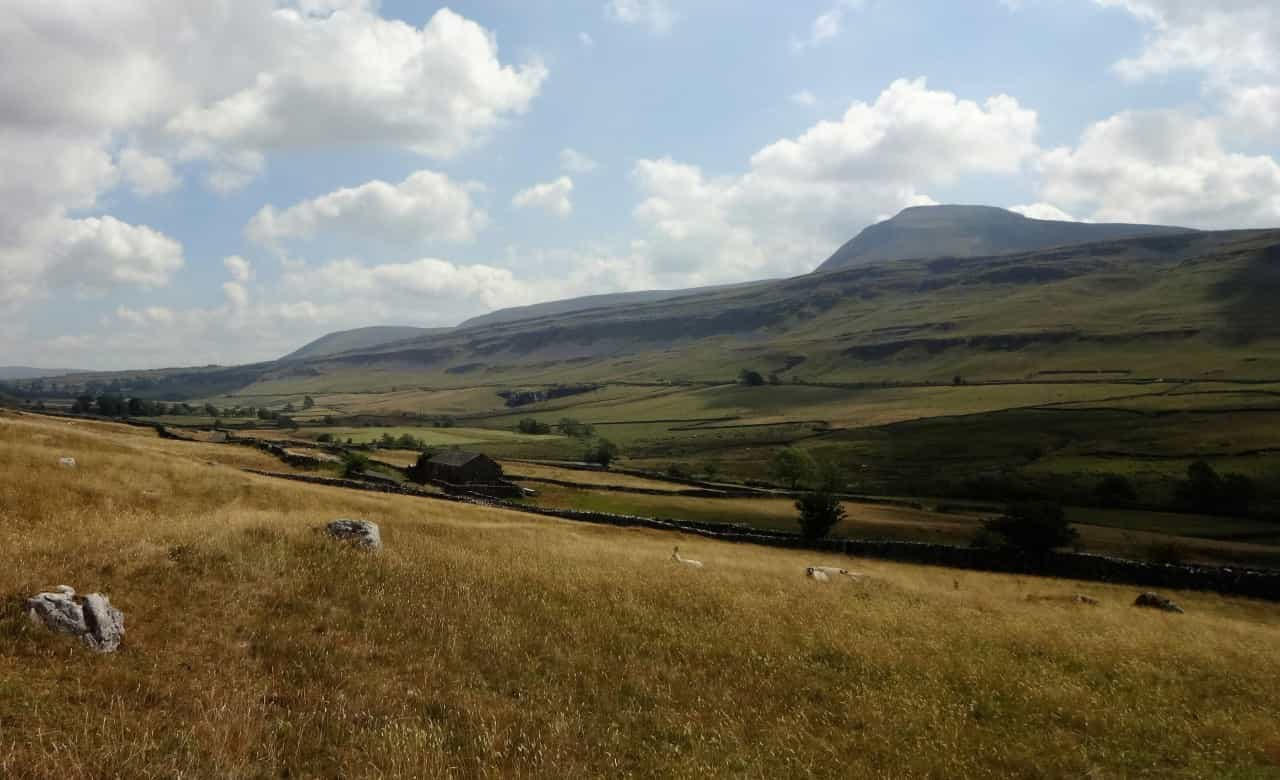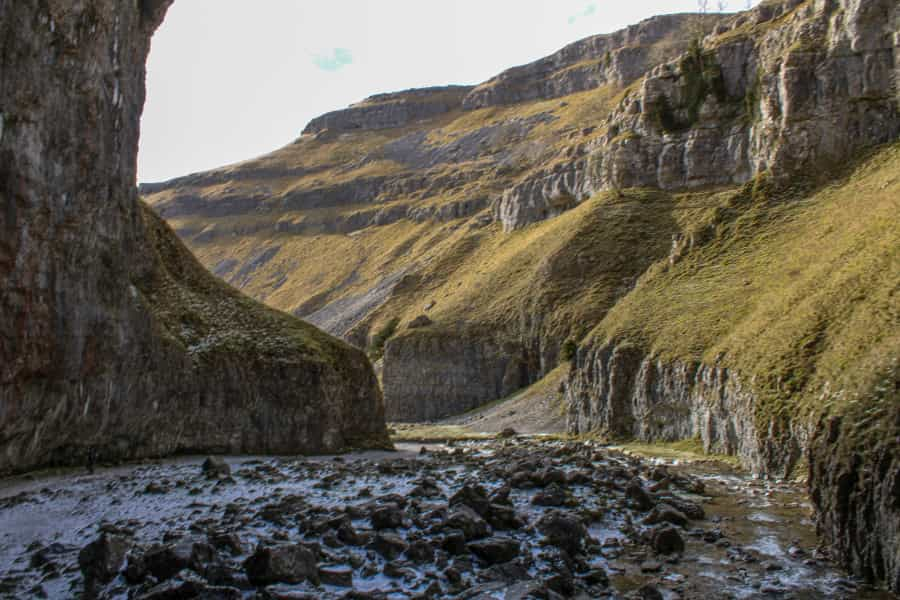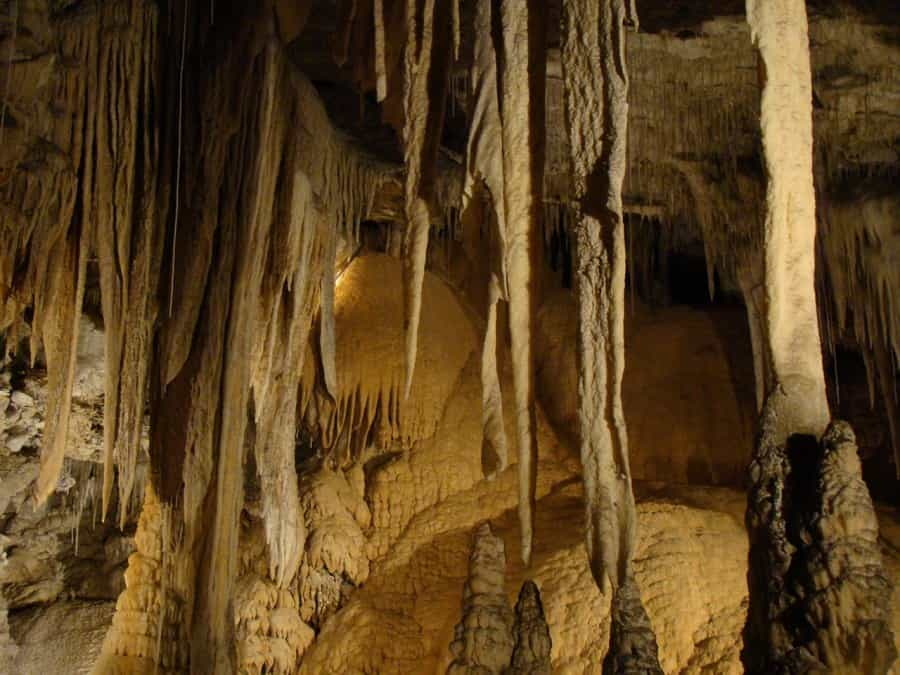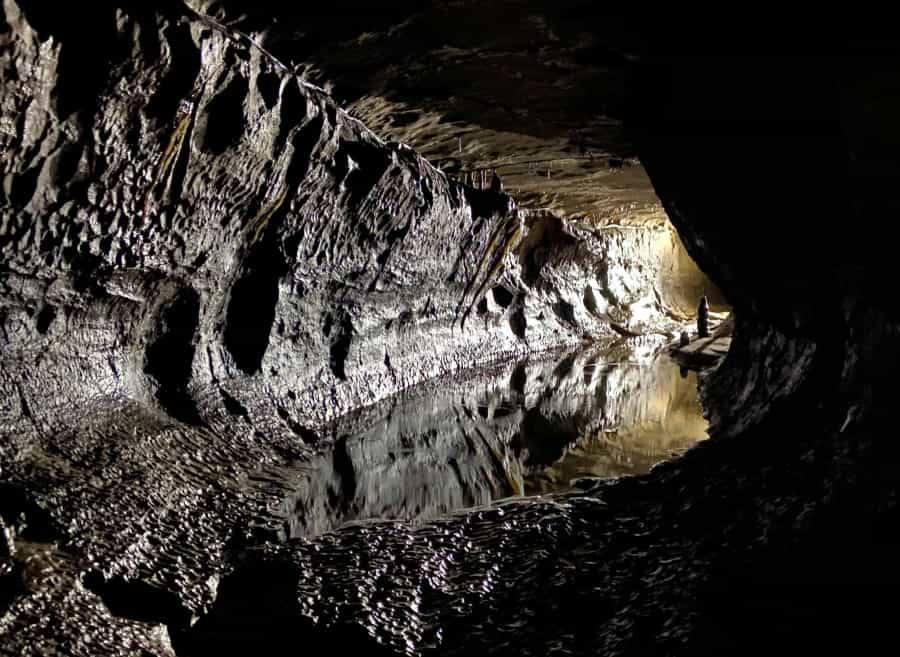Caving in the Yorkshire Dales

The natural geology of the Yorkshire Dales – with extensive outcrops of carboniferous limestone – means that there are thousands of caves, passages, potholes and caverns under the surface in this national park. So, along with all the beautiful landscapes above ground, there’s a whole subterranean world for visitors to discover.
Our guide to the best caves to visit in the Yorkshire Dales takes in famous show caves that anyone can visit, like White Scar and Ingleborough, family-friendly sites with activities for children, and some suggestions for more challenging routes that experienced cavers will enjoy. It’s time so start planning your underground adventure.
Famous cave systems in the Yorkshire Dales

There are plenty of Yorkshire Dales caves that are accessible to novices and families. Here are some of our favourites.
Gaping Gill
Home to a main chamber that’s 129 metres long and 31 metres high – large enough to accommodate St Paul’s Cathedral – Gaping Gill is one of the best-known caves in the national park. Adding to the dramatic effect, the Fell Back stream plunges over the edge of the chamber, forming a spectacular waterfall.
Experienced cavers with Single Rope Technique (SRT) skills can access the chamber throughout the year, but if you want the chance to see inside this natural wonder, you’ll need to be in the park during a one-week window in either May or August. That’s when the Bradford Pothole Club and Craven Pothole Club set up a winch that allows members of the public to be lowered down. The cavern is lit, allowing you to view the rock formations within and appreciate the sheer size of the space, and has information boards that let you learn more about the environment. If you’re lucky, the club’s members may be around to enlighten you further as well.
The Craven Club manages the August descents, and the Bradford club is in charge in May. The descent (£20 per person) can only be booked on site on the day, and it's a hot ticket, so make sure you get there early to reserve a (numbered) slot. Heavy rain can affect the regularity of the descents, so try and pick a sunny day, and make sure you have warm, waterproof clothing and sturdy footwear.
How to get there: The Gaping Gill cave sits above the Ingleborough Show Cave and is accessed via a well-marked path from Clapham – a 1.5 hour walk.
Tip: If you have to wait a long while on the day of your descent, you could explore the Ingleborough cave to fill some time – it's about half an hour’s walk away.
White Scar Cave
Just off the B6255 between Ingleton and Hawes, with a car park on site, White Scar Cave is the longest show cave in the UK. It’s easily accessible via a man-made tunnel, and guided tours (approx 1 mile, 80 minutes, suitable for all ages) run throughout the day and reveal information about the cave’s geology and history.
You'll explore the cave via a series of metal boardwalks, all of them well lit. Highlights include thousands of stalactites, stalagmites and flowstone formations, underground waterfalls and the enormous Battlefield Cavern. Cavers are an imaginative lot when it comes to naming some of these features, so look out for distinctive formations like The Witch’s Fingers and The Judge’s Head, and the delicate orange stalactites known as The Carrots. You can also edge your way through the narrow Squeeze, and try to avoid the drips from the flowstone formation known as the Devil’s Tongue (which is apparently bad luck).
Ingleborough Cave
Close to Gaping Gill on the lower slopes of Ingleborough mountain, Ingleborough Cave is another accessible show cavern, with floodlit passages and concrete paths inside that make it easy to explore on a self-guided tour (0.6 miles, approx 1 hour).
First discovered in 1837, the passage here takes you 500 metres underground, and is lined with calcite flows, stalagmites and stalactites. Look out for the column that joins the floor to the ceiling in the Pillar Hall, the evocatively named Queen Victoria’s Bloomers, a particularly impressive stalactite known as the Sword of Damocles and the Pool of Reflections, where standing water doubles the effect of the surrounding formations.
In the 1980s cave divers discovered that the passage eventually joins up with Gaping Gill, and back in 2001 the tooth of a woolly rhinoceros was discovered here (you’re unlikely to come across a live one though…).
Tip: If you’d like to experience the serene atmosphere here in a different way, look out for the candlelit meditation and sound bath sessions hosted here on certain summer evenings by the local Fellbeing yoga centre.

Family-friendly caving adventures
Stump Cross Caverns
On the B6265 between Pateley Bridge and Grassington, Stump Cross is a family-friendly show cave offering an easy introduction to the underground world. Accessed by a flight of steps, colourfully lit and offering self-guided tours (approx. 45 minutes), it’s a good bet if you have younger children. Activities for kids here include a fossil quiz, ‘fairy doors’ to spot, and the chance to pan for gems in a series of wooden sluices above ground.
Underground, there’s no shortage of imaginatively named formations to discover, including The Butcher’s Shop; two huge pillars known as The Twins; The Curtain, notable for its red-streaked surface; and others that resemble sandcastles, birds, a church organ and a wedding cake.
Tip: After 3pm the cavern’s lights are switched off, allowing you to enjoy an Ultra Violet (UV) experience by shining a UV torch onto the phosphorescent calcite rocks, which glow magically in the dark (separate tickets required).
Great Douk Cave
An accessible cave system that's suitable for families with older children, Great Douk Cave follows a 900-metre passageway with a shallow stream that leads you through Ingleborough hill to an exit in the roof at Middle Washfold. It does involve getting wet and wearing protective clothing, but it’s a great adventure for kids, with a feel of ‘real’ caving. Before you set off, visit Inglesport in nearby Ingleton to hire a helmet with a lamp, plus wellies and a waterproof suit.
The impressive entrance has its own waterfall, which you scramble up to enter (or crawl along a neighbouring shelf), and the trip involves a couple of easy crawls that add to the excitement. Look out for flowstone formations including the Giant’s Hand and the Lion Duchess, knee-deep rapids and occasional holes in the roof where you can see the daylight high above you.
Note: This isn’t a journey to be attempted in wet weather, so pick a dry time. If you’d like to know what you’re letting yourself in for, Stephen Oldfield’s great blog has a detailed description and pictures of the route.
How to get there: follow the path from the Old Hill Inn on the B6255 (0.5 miles, signposted).
Challenging caving routes

‘Wild caving’ or potholing is an entirely different activity to visiting a show cave, and can involve negotiating steep drops, water hazards and very narrow passages, often with very little lighting. If you’d like to try this, it’s best to go with an experienced guide or a club, and you’ll need the right kit, which includes helmets, head lamps, ladders and climbing equipment, as well as protective clothing.
If you'd like to try out this excitement, Lost Earth Adventures runs guided potholing trips, while Yorkshire Dales Guides has training facilities and runs introductory safety courses, as well as offering trips for different levels of experience with expert guides who will introduce you to the sport. The following caves are all possible to explore, but require expert guidance and careful planning at the very least before you visit.
Alum Pot
On the slopes of Ingleborough just above Selside, the challenging vertical cave system at Alum Pot begins at a 70-metre deep pothole surrounded by a wall for safety, and is a popular site with experienced cavers. Lost EarthAdventures and Yorkshire Dales Guides both run trips here, but proper equipment and knowledge of Single Rope Technique (SRT) are essential.
Access to the site requires the payment of a small fee at nearby Selside Farm. You can view Alum Pot from the nearby slopes, but do not cross the wall.
Ease Gill Caverns
Ease Gill Caverns is part of the Three Counties System, which at more than 80 kilometres long is one of the most extensive cave systems in the UK, with a huge network of passages and chambers and many entrances. A visit here requires careful route planning and is suitable for advanced cavers only as it involves challenging crawls, rope work and possible flooding. If this sounds like something you'd like to try, we’d suggest contacting an experienced provider to ask about specially tailored trips, or doing some very thorough research before you visit.
Lost Johns’ Cave
This challenging cave on Leck Fell in the southwest of the park is another part of the Three Counties System, home to impressive chambers, waterfalls and some spectacular vertical drops. It requires all the gear for vertical caving and a familiarity with Single Rope Techniques, so it’s another one for experienced cavers only.
The Council for the Northern Caving Community has a page with details of how to access the site (which involves payment of a small fee to the landowner), and it’s well worth contacting local Yorkshire Dales caving clubs and providers to see if they’re planning a trip that you could join. The national park’s website has a handy list of local caving contacts, with further links to sites with more information.
Essential tips for caving in the Yorkshire Dales
-
Never go caving alone – always go with a knowledgeable guide or a tour group
-
If necessary, ensure you have the proper equipment, including a helmet, headlamp and appropriate clothing
-
Check weather conditions before your trip, as heavy rain can cause flooding in some caves
-
Inform someone of your planned route and expected return time
-
Carry a first-aid kit and know basic first aid
-
Follow the Countryside Code: leave no trace and respect the underground environment
-
Avoid touching rock formations, as oils from your skin can damage them
-
Take all litter with you and dispose of it properly
Whether you want to lower yourself down a waterfall, venture into the UK’s longest cave system or just hunt for fairies, there’s a cave in the Yorkshire Dales just waiting to be explored. Which one will you choose?
If you’d like to combine your Yorkshire Dales caving trip with a couple of nights of camping, check out Pitchup’s list of the best Yorkshire Dales campsites.